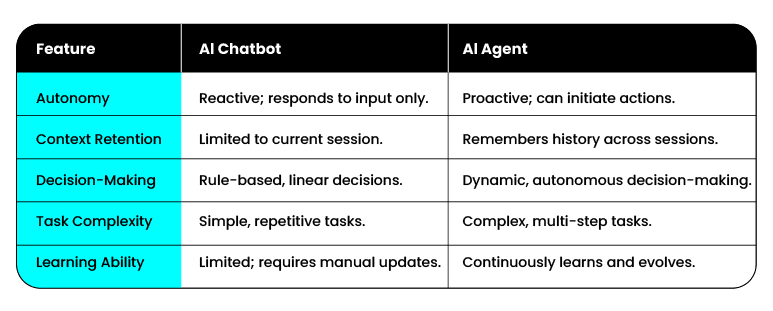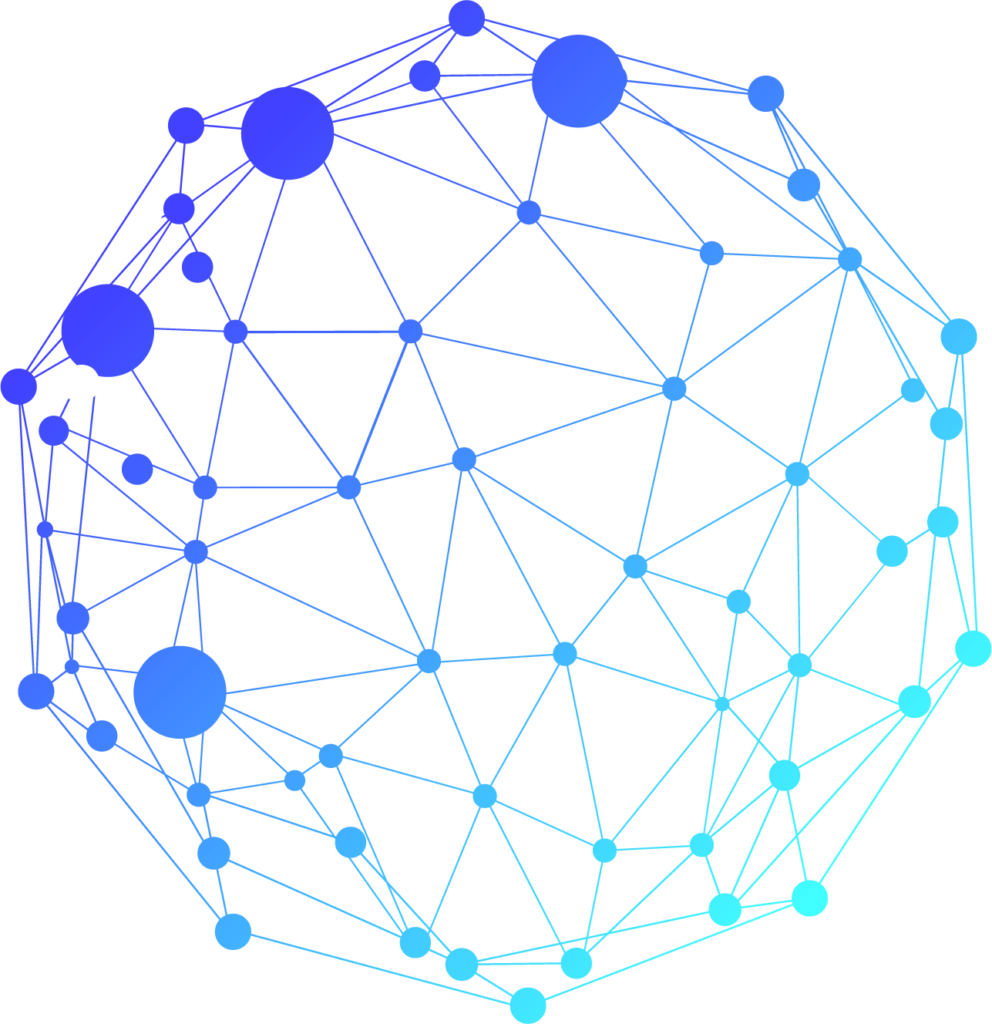Discover how the evolution of simple chatbots into sophisticated AI agents opens up an unprecedented range of possibilities for creating disruptive products. This paper explores the new frontiers of development driven by conversational artificial intelligence, revealing opportunities to innovate user-product interaction and create transformative experiences.
At the end of 2022, a revolution occurred in the current state of artificial intelligence (AI). An AI tool became extremely popular and innovative: ChatGPT. Because its web interface is not very complex and very intuitive, it is extremely effective in getting its generative language model to communicate with people. ChatGPT has opened its use to the public for free, which has sparked enormous interest in people around the world interacting with its algorithm.
This new era brought with it multitasking and multipurpose models capable of addressing diverse topics with remarkable precision and versatility. The evolution continued toward multimodality, allowing AI to process multiple input and output formats (text, images, speech, etc.) in an integrated manner, enriching human-machine interactions. Later, progress was made toward more complex «reasoning,» where newer models can perform more difficult tasks with less reliance on human guidance.
In this post, we will delve into the key differences between chatbots and artificial intelligence agents, with a focus on identifying the opportunities and benefits in product development in the context of constant business automation, as well as the need to consider the risks when adequate input data is not considered, a controlled infrastructure is not available, and a reliable service provider is not available.
Toward a Definition of AI
Artificial intelligence has permeated nearly every aspect of our lives. In its simplest form, AI can be described as the ability of machines to apply algorithms, learn from data, and apply that learning to decision-making in a manner similar to human intelligence. However, unlike humans, AI systems have the advantage of not requiring rest and can process vast amounts of information simultaneously, often with a significantly lower error rate on equivalent tasks.
Historically, Alan Turing is considered the father of AI, having anticipated future developments and, crucially, intuited the importance of machine learning in its development. His vision of emulating a child’s mind through learning as a more feasible path to adult artificial intelligence lays the foundation for today’s developmental robotics.
A Current Look at Chatbots as AI Assistants
A chatbot is a computer program that simulates a human conversation with an end user. Not all chatbots are equipped with artificial intelligence (AI), but modern chatbots are increasingly using conversational AI techniques such as natural language processing (NLP) to understand user questions and automate responses.
There’s no doubt that the next generation of chatbots with generative AI capabilities will offer even greater functionality with their understanding of common language and complex queries, their ability to adapt to the user’s conversational style, and their use of empathy when answering user questions. Business leaders see this future clearly: 85% of executives say generative AI will interact directly with customers within the next two years (according to IBV’s “The CEO’s Guide to Generative AI”). An enterprise-grade AI solution can enable companies to automate self-service and accelerate the development of exceptional user experiences (see previous 7Puentes post).
Key differences between chatbots and AI agents
The main difference between an AI assistant-typically a chatbot-and an AI agent is their level of autonomy and decision-making capabilities. AI assistants typically require instructions or input from the user, and focus on providing real-time information or assistance. AI agents, on the other hand, can operate more independently, gathering information, processing it, and acting on predefined goals.
In terms of current applications, chatbots often play a critical role in AI customer service, resolving up to 80% of queries without human intervention. If you urgently need to improve customer service and experience while reducing workload, AI chatbots are a cost-effective solution.
However, if you want to automate complex tasks and provide a more personalized experience beyond customer service, AI agents are a better fit. As this revolutionary advancement in AI technology continues to evolve, you’ll undoubtedly find exciting new applications in the future.
For some businesses, a hybrid approach that balances the use of chatbots with AI agents may be the optimal option.
The chart below explains the differences based on core characteristics such as autonomy, context retention, decision making, task complexity, and learning ability.

Consider this comparison:
- Chatbots handle simple tasks: AI chatbots are ideal for routine queries, such as frequently asked questions, but they lack adaptability and context awareness.
- AI agents provide advanced capabilities: Based on LLM, they can manage complex workflows, learn from interactions, and provide personalized and contextual responses.
- Use cases depend on complexity: AI chatbots are ideal for repetitive tasks, while AI agents excel at dynamic problem solving and strategic decision-making.
- Choose based on business goals: AI chatbots are an excellent AI tool for automating routines. AI agents are the best choice for scalable and intelligent solutions.
Components, Features, and Levels of Autonomy of Modern AI Agents
AI agents are considered the new frontier of automation. These agents combine language models with «tools» that allow them to remember previous interactions and access external resources to perceive, interpret, and interact with the environment. This integration lays the foundation for more complex systems capable of breaking down processes into concrete steps and executing complete workflows autonomously and dynamically.
Its impact is evident in areas ranging from software development and education to finance, consumer goods, customer service, energy, and healthcare, among others.
The key components of an AI agent include:
- Base agent or language model: Acts as the system’s central reasoning engine, orchestrating logical reasoning, planning, contextual understanding, and personalized interaction.
- Memory module: Allows information to be stored and retrieved, maintaining context and continuity over time, ensuring personalized and consistent responses.
- Tools: Provides access to external resources such as databases and APIs, enabling the agent to perform specific tasks and interact with the outside world.
- Orchestration layer: Present in some architectures, it defines a processing cycle in which the agent receives information, reasons internally, and decides its next action until it achieves its goal.
Regarding the levels of autonomy of these agents, the autonomy of agentic systems is not a binary concept, but can be ordered by scale. A proposed five-level classification, inspired by the autonomous vehicle standard, is adapted to the context of generative AI-based agents:
- First level of automation: automation without AI: traditional systems completely dependent on human activation (e.g., chatbots with predefined responses).
- Second level of automation: Automation with generative AI: Includes generative AI, but requires active user intervention through natural language (e.g., using ChatGPT to generate reports with provided data).
- Third level of automation: Agentic workflow with low autonomy: Customized agents perform tasks autonomously within predefined parameters (e.g., GPT specialized for legal writing with human supervision).
- Fourth level of automation: moderately autonomous agentic workflow (workflows powered by generative AI): Basic agents drive tasks through predefined paths (e.g., a system that classifies documents, writes reports, queries APIs, and automatically sends results).
- Fifth level of automation: highly autonomous agentic workflow (agents powered by generative AI in the strict sense): They can manage entire workflows autonomously, adaptively, and dynamically (e.g., an AI agent that organizes complex travel).
As AI agents gain autonomy, human intervention becomes critical. In the design phase of highly autonomous agent-based workflows, it is essential to define clear goals and boundaries to guide the agent’s decision-making process. In addition, critical points in the workflows must be identified where experts can monitor and validate the system’s output to ensure that it is consistent with organizational goals and ethical principles.
This gives rise to the concept of the Human Augmented Agent, where human intervention is integrated at specific points in the workflow to provide feedback, validate, refine, replace, or override the system’s actions. This human component is essential to establish criteria that limit the agent’s capabilities, mitigate risks such as hallucinations and biases, mimic human communication, and enhance the system’s long-term memory and learning.
Risks in Current Chatbot and AI Agent Applications
Clearly, the latest generative AI chatbots can pose risks related to:
1) Security, with the potential for data leakage.
2) Confidentiality and liability issues that fall short of standards.
3) Intellectual property complexity, incomplete licensing of source data, and uncertainty about privacy and compliance with international laws.
4) Limited technical support based on the type of service subscription or membership held.
With the lack of adequate input data, there is a constant risk of «hallucination», offering inaccurate or irrelevant answers that force the customer to escalate the conversation to another channel. At the same time, security and data leakage is a significant risk if confidential third-party or internal company information is introduced into a generative AI chatbot and becomes part of the chatbot’s data model, which could be shared with others asking relevant questions. This could lead to data leaks and violate an organization’s security policies.
Despite their potential, AI agents pose certain risks related to technical limitations, ethical concerns, and broader societal impacts associated with a system’s level of autonomy and the overall potential for their use when humans are removed from the loop.
Technical risks include errors, malfunctions, and security issues, including the potential for automated cyberattacks. For this reason, it is critical to improve agent transparency and implement «human-in-the-loop» oversight that allows agents to operate autonomously while human experts review decisions once they are made, establish clear ethical and regulatory guidelines, and always prioritize data governance and cybersecurity before deploying AI agents.
Opportunities and benefits offered by 7Puentes through its innovative AI products
The evolution from the basic definition of AI to the sophistication of intelligent agents represents a significant advance in automation. While generative AI has already changed the way we work, AI agents accentuate this change by modifying the nature of human intervention, shifting from the direct execution of tasks to the monitoring and processing of complex results generated by agentic workflows.
In this complex context, 7Puentes develops robust products focused on user needs, flexible and customizable according to specific client requirements.
In recent years, it has focused on the development of AI solutions based on intelligent multi-agent solutions, LLMs and large volume text classification for industry.
In particular, it has focused on the needs and problems of the oil and gas sector, where it combines the functionalities of AI assistants and agents in a hybrid way.
Among the comparative advantages of the AI products developed by 7Puentes, the following stand out:
1) Use of the agile MLOps methodology: this allows us to develop solutions that accelerate our clients’ operations.
2) Compliance with standards: confidentiality, integrity and availability of client data.
3) Security protocols: applied to all products and services provided, with strict access controls that limit the information each user can access based on their role within the system.
4) Dedicated 24/7 support: allowing clients to focus their resources on resolving technical issues while receiving reliable support from our consultants.
5) In-house server operations: the key is to avoid relying exclusively on cloud services (which often involve additional costs for consulting and dependence on third parties), and to have greater control over data processing.
6) Personalization of AI products and data: tailored to the role descriptions of each user, significantly improving the end-user experience for both the companies that use our services.
If you’d like to learn more about the possibilities of AI development for your company, contact our business executives free of charge.

